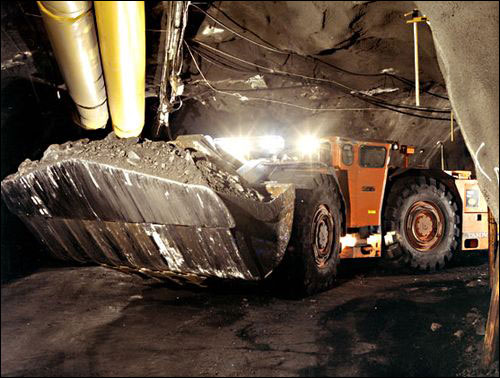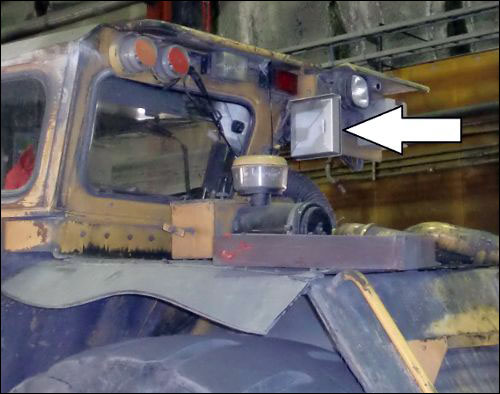Feb 23, 2012Two mines in Sweden are employing radio frequency identification technology to improve the quality and efficiency of its iron-ore extraction. The mines are currently in the process of switching from active tags to passive EPC Gen 2 ultrahigh-frequency (UHF) RFID tags.
The mines, located in Malmberget and Kiruna, are operated by Luossavaara Kiirunavaara AB (LKAB), a government-owned company. According to the project's systems integrator, Softcenter, a provider of IT solutions to the mining, manufacturing and logistics industries, LKAB has chosen to adopt EPC Gen 2 passive UHF RFID tags because they are cheaper to own and operate, and comply with international standards. The applications have been in operation since 2007.

Iron mines typically comprise horizontal tunnels, known as drifts, bored through the earth. Within each mine, drill rigs tunnel upwards, and explosives are then inserted into the resultant holes. Following each blast, rock and ore must be sorted and moved to the proper locations, using heavy vehicles called loaders. LKAB's largest loaders weigh 80 tons each, with a bucket capacity of 25 tons. Both mines produce ore 24 hours a day over the course of three shifts, operating a combined total of 32 loaders.
With LKAB's RFID-based system—which it calls the Wireless Online Loading Information System (WOLIS)—passive EPC Gen 2 UHF RFID tags are mounted on drift walls in places where the loaders use their buckets to pick up rock and ore following a blast. The tags are also mounted at shafts, where loaders dump out the ore and rock. The tags' unique ID numbers correspond to different drifts or shafts.
Each loader is outfitted with an RFID antenna and reader that are used to interrogate the tags along the drifts and shafts, in order to provide information regarding the location at which work was performed. Readers are mounted within each loader's cabin, and antennas are situated outside, near the cabin. After receiving a work order on an onboard computer (when in range of a WLAN router), a driver moves his or her loader to the first loading place inside the maze of tunnels. When the driver comes within 7 meters (23 feet) of a passive RFID tag, the loader's reader interrogates the tag. Later, when the loader is back in range of a WLAN router, the information collected via RFID is transmitted to the system's back end, along with other information collected and stored on the onboard computer.
Calculations are made based on algorithms designed to function in tandem with information about the weight of loads within a bucket and the number of loads handled. The number of loads is tracked by the loader's onboard computer, and each load's value is calculated by weighing the contents of a loader's bucket with the built-in scale. That information is also sent to the loader's onboard computer. By weighing the load and comparing that information with statistical records, mine operators can determine if a load consists mostly of ore or of rock.
This quality-control information is combined with the location data collected via RFID, and is transferred automatically into WOLIS. At this point, further instructions and additional information for the driver—including graphics that depict the work area—are also downloaded automatically.
This information is important for running an efficient mine, the company reports. Before RFID was implemented, drivers had to manually track their location and load data, saving weight information from the bucket scale to a memory stick. The driver then passed along all of that information at the end of each shift, by which time it was too late to make adjustments to that day's work orders.
Now, the RFID-based system allows managers and drivers to make timely and better decisions regarding the amount of loading to perform at a particular spot. If the decision to cease loading is made too early, the iron ore will be difficult to locate at a later date; if the decision is made too late, the loaders' production will be decreased by hauling loads mostly composed of granite or other valueless rock.
Softcenter implemented the RFID system first in Malmberget, and later in Kiruna. In 2011, the company began swapping out the previous active tags, which LKAB considered too expensive to purchase and maintain. Softcenter hired Scirocco, which manufactures automatic-identification systems for large and valuable objects, to supply new, passive tags and readers for the solution.
Daniel Eliasson, an IT consultant at Softcenter, says that Softcenter and LKAB are now using Scirocco's R600 UHF RFID readers, A100 antennas and T500 heavy-duty tags. The interrogators have a range of 7 meters (23 feet) and were made for the industrial environment. Softcenter began testing Scirocco hardware in March 2011, and started rolling out the passive technology in November. The application features several hundred passive RFID tags within both mines. The tags are customized by Scirocco, says Stefan Wilhelmsson, Scirocco's VP of sales and marketing, and are produced using inlays and chips provided by various suppliers, including NXP Semiconductors.
According to Eliasson, the mines' use of RFID could be expanded by tagging railroad wagons utilized to transport ore. Readers placed at various junctures, he says, would make it possible to trace the iron ore throughout its journey from inside the earth to steel factories.



